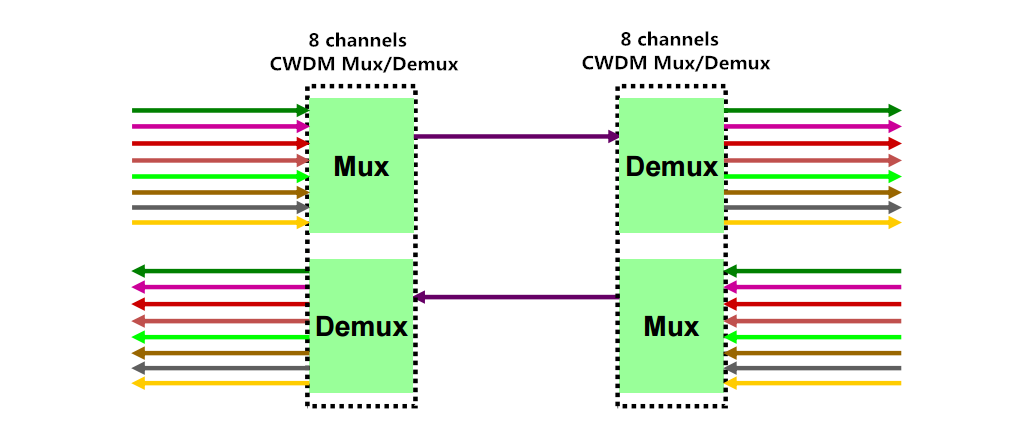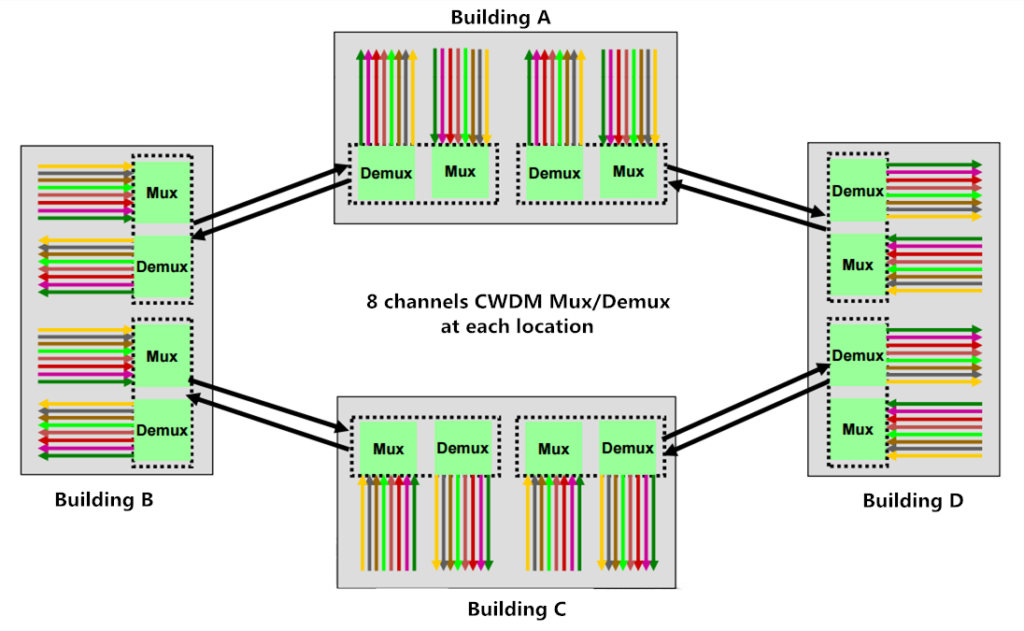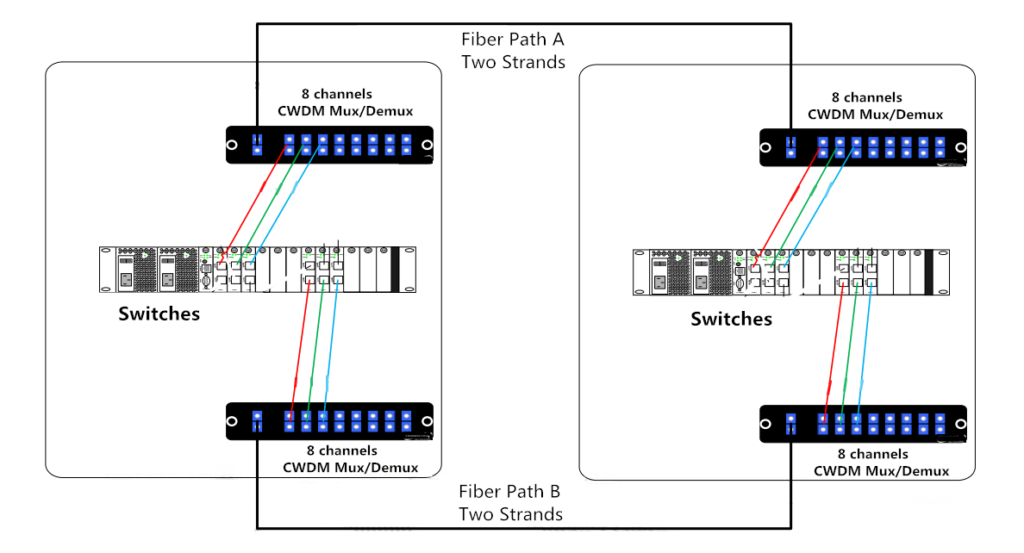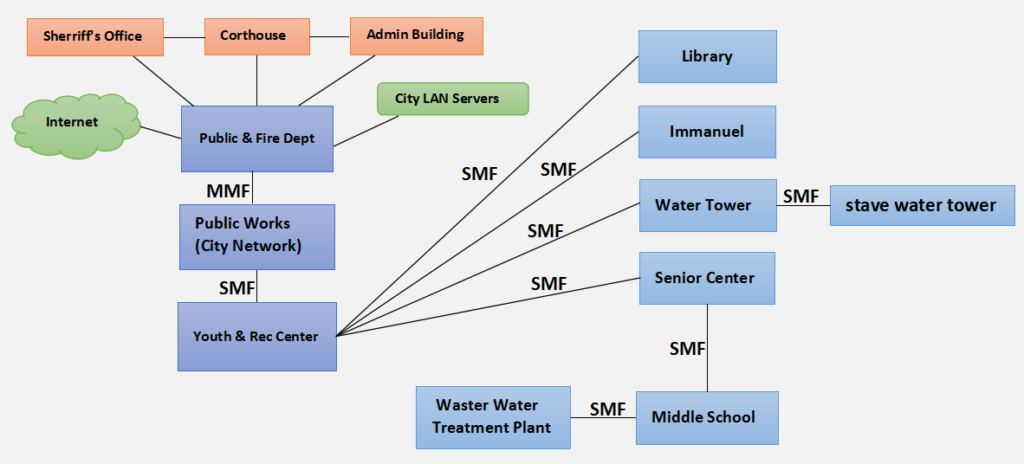CWDM network, as an easy-to-deploy and cost-effective solution, has been applied in many areas. Although CWDM network is not as perfect as DWDM networks in data capacity, it still can satisfy a wide range of applications in optical applications. And CWDM is a passive network, allowing any protocol to be transported over the link, as long as it is at the specific wavelength. This article is going to describe several application cases of 10G CWDM network in different areas.
Although 40G and 100G networks are developing rapidly, many of them still need to grow on the basis of 10G networks. And due to the high cost of 40G and 100G, 10G networks are still the most common networks to be deployed. Here are the main benefits of 10G CWDM networks.
- CWDM Mux/Demux is a passive component and requires no extra power, offering a cost-effective choice for network designers.
- Increased network connections and easy to evolve from 10G to 40G and 100G networks. For example, 10G CWDM network can combine DWDM wavelengths using the 1550nm channel on CWDM Mux/Demux. And if an operator want to upgrade its 10G network to 40G or 100G, there are various fiber components in market that can help him realize this conversion.
- Lower cost. 10G hardware has become cheaper, which make 10G CWDM network more economical. For example, buying one pcs 8 channels CWDM Mux/Demux which is the most often used in CWDM networks needs less than 330 dollars in some stores. And 10G CWDM optical transceivers are also very cheap now.
As has mentioned above, 10G CWDM network has been widely deployed in different areas. Here are the common CWDM network infrastructures.
A point-to-point CWDM network is the simplest network structure of CWDM networks, but it is the basis of other complex network infrastructures. By adding other components like CWDM OADM, the point-to-point CWDM network is easy to be changed into more complicated networks. The following figure shows a point-to-point CWDM network using 8 channels CWDM Mux/Demux.

CWDM ring links are suitable for interconnecting geographically dispersed LANs and storage area networks. Business can benefit from CWDM by using multiple Gigabit Ethernet. As shown in the below picture, the four buildings are connected by several 8 channels CWDM Mux/Demuxes.

CWDM uses different wavelengths to carry different signals over a single optical fiber, which offers many benefits to service providers that need to better utilize the existing fiber infrastructure. In this application, two Cisco switches are connected together through four 8 channels CWDM Mux/Demuxes. Signals are multiplexed and then transmitted through two strands fiber cables.

As the scale expansion of many campus, the need for adding bandwidth of new applications is increasing too. And the new campus, school teaching and student life Internet require a lot of bandwidth resources, so building a new network is undoubtedly needs a large investment. Then how to make a full use of existing fibers is a problem needed to be resolved.

In this case, four 8 channels CWDM Mux/Demux with expansion port are used to double the capacity on the existing fiber without the need for installing or leasing additional fibers, which reduce cost and labor.
As the development of WDM technology and market, the deployment of CWDM network will be more lower. FS.COM provides affordable CWDM network components at a low price. Following is a list of our products.
| Product ID | Description |
| 42945 | 8 channels 1290-1430nm dual fiber CWDM Mux Demux |
| 43099 | 8 channels 1470-1610nm dual fiber CWDM Mux Demux with expansion port |
| 19367 | Cisco Compatible 10G CWDM SFP+ 1470nm 80km DOM Transceiver |
| 31290 | Cisco Compatible 10G CWDM SFP+ 1290nm 40km DOM Transceiver |




